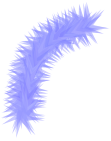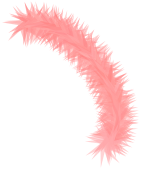
.





‘Knowledge is power’



World’s
encyclopedic
knowledge
compacted
in
your
hand





Please raise the vol to listen to the
lady airing awe @ the SINGLE author ncyclopedia
You may also like:
Future humans to look like Pokemon characters sound
Saudi writer urges groping of women to make them stay at home
?DNA Proof of 6" Tall Extraterrestrial: 2013
Sixth sense technology that'll empower humanity -TED lecture
The Downfall of Darwinism
Darwin’s theory is undoubtedly simple and elegant. But is it true? This, of course, was the central
question during Darwin’s lifetime, and it remains the central question to this day. Considering
e enormous impact Darwin’s theory has had over the last 150 years, many people
may be surprised to learn that within decades of its being proposed scientists had come to
see that it was obviously not true. Today, virtu-ally no serious scientist believes in Darwin’s theory
as he proposed it. Rather, they have come to believe in some form of neo-Darwinism, a
later development that agrees with Darwin on only two points: that evo-lution from a common ancestor
took place and that it occurred through natural processes alone.
To make the difference between Darwinism and neo-Darwinism clear, it is useful to look at what
was wrong with Darwin’s original the-ory. This will also allow us to see how some people, including
certain biologists, unwittingly cling to some of the ideas that have otherwise been rejected for
well over a century. Varieties and SpeciesThe standard definition of a species for sexually-reproducing
organisms requires that members of the same species can mate and create fertile offspring. If two
rganisms engage in sex and cannot produce offspring
capable of further propagation of their own species, the two organisms belong to different species.
Darwin agreed with this definition.5Taxonomy teaches us that species are divided into varieties,
also known as races or sorts. However, varieties, unlike species, do not have
strong demarcations between them; that is, they can crossbreed freely and produce fertile offspring.
Their offspring will still belong to their species even if the crossbreeding produces a new variety. The
various races of humans are an example of the effect of crossbreeding. All
humans, regardless of race (variety), can propagate and produce fertile offspring.
The crux of Darwin’s argument is that varieties can graduallybecome species through breeding
. In other words, he believed that the changes that appear in the varieties within a species can be
extended unlimitedly:Nevertheless, according to my view, varieties are species in the
process of formation, or are, as I have called them, incipient species. How, then, does the
lesser difference between varieties become augmented into the greater difference between species?
That this does habitually happen we must infer from most of the innumerable species
throughout nature presenting wellmarked differences; whereas varieties, the supposed prototypes
and parents of future well-marked species, present slight and ill-defined differences.
6
In short, Darwin believed that plant and animal breeding can give rise to new species. The
first chapter in Origin, “Variation Under Domestication,” examines the effect human-directed
breeding has on a species. Although he doesn’t state it outright, Darwin implies that if given enough
time and enough crossbreeding, species could be bred until they become a new species. In
his second chapter, “Variation Under Nature
,”
Darwin argues that nature also has the capability to breed varieties until they become new
species through the process of natural selection.As it turned out, Darwin was wrong about how
much change actually occurs in varieties. Therefore he was also wrong to think that new species
could arise given enough crossbreeding. We now know that nature has placed limits on
how far a species can change. Breeding can affect differences only in preexist-ing characteristics.
For example, by breeding dogs one can produce dogs of different sizes, temperaments, or hair
length and color. But whether short or tall, the dogs remain dogs. It is not possible to breed for
character-istics that are not already present in dogs. We will never be able to produce a cat by
breeding dogs, even if we breed through many genera-tions. Breeding simply shuffles and
recombines already existing traits.We have also discovered that there are limits even on how much
one can enhance or suppress the inherent characteristics. The American botanist and plant
breeder Luther Burbank (1849–1926) stated
I know from experience that I can develop a plum half an inchlong or one two-and-a-half inches
long, with every possible length in between, but I am willing to admit that it is hopeless
to try to get a plum the size of a small pea, or one as big as a grapefruit. I have roses that
bloom pretty steadily for six months of the year, but I have none that will bloom twelve, and I will not
have. In short, there are limits to the development possible.7
The noted French zoologist Pierre Grassé (1895–1985) agreed: In spite of the intense pressure
generated by artificial selection (eliminating any parent not answering the criteria of choice)
over whole millennia, no new species are born. A comparative study of sera, hemoglobins, blood
proteins, interfertility, etc., proves that the strains remain within the same specific defi-
nition. This is not a matter of opinion or subjective classifica-tion, but a measurable reality.
The fact is that selection gives tangible form to and gathers together all the varieties a genome
is capable of producing, but does not constitute an innovative evolutionary process.
8In 1982, Francis Hitching wrote similarly about selective breeding:
It is now absolutely clear that there are firm natural limits to what can be done. Remarkable
achievements can be made by crossbreeding and selection inside the species barrier, or within
a larger circle of closely related species, such as wheats. But wheat is still wheat, and not, for
instance, grapefruit. Between 1800 and 1878, the sugar content of beets was raised from 6 to
17 per cent. A half century of further breeding failed to make any difference.”
9All this was not only demonstrated in the years following Darwin; before and during his time
biologists had already been correctly observed that there were limits to the changes one could
effect through breedingDarwin’s notion that varieties could turn into species was wishful
thinking and not based on actual evidence.
Pangenesis
– The Inheritance of Acquired TraitsThe other thing Darwin got wrong was the mechanism of
inheritance, and this soon became obvious as the science of genetics advanced.
While he conceded his ignorance (“The laws governing inheritance are quite unknown”
10), he still made assumptions about how they worked. It was later shown that they didn’t work in the
way he had thought. Natural selection alone is not enough to create a new species. Natural selection
cannot create; it can only eliminate. The French scientist Hugo de Vries pointed out that natural
selection may explain the survival of the fittest but not the arrival of the fittest.11
Even more important than natural selection is the appearance of favorable variations. As Darwin
himself noted, “...unless profitable variations do occur, natural selection can do nothing.”
12 For example, there could be no breeding of new dog races if all dogs were born completely
identical. Natural selection has to have some variation to select from in order for evolution to take
place. Darwin believed that the variation needed for his theory was pro-
vided by external influences on the organisms. He believed that food and environment effect
and change the organisms as do how organ-isms use
Empowering Newsletter






WOMEN’S POWER: ITS PAST, ITS PRESENT, ITS FUTURE: FEMOCRACY
WEB PAGES
OUR OFFERING
UPLOADED ITEMS
OUR EMAIL
kri200@womenspowerbook.org
QUESTION




















